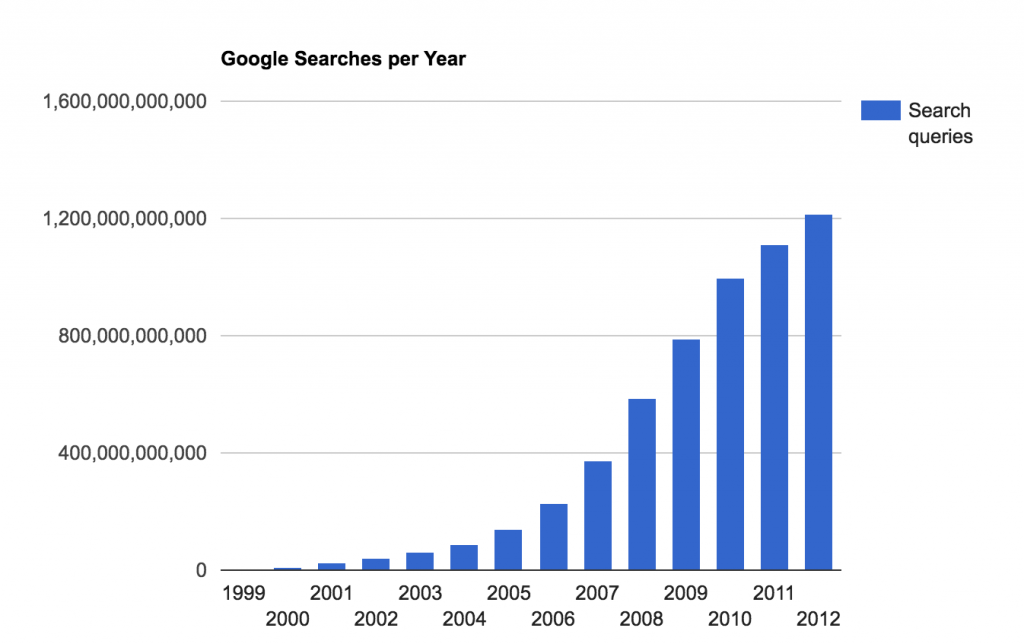How artificial intelligence is changing organic search
Artificial intelligence isn’t a new concept, spam filters have been using it for years (in the form of ANI – Artificial Narrow Intelligence) to protect our inboxes and it has been used in films since the 1920s to captivate and astound audiences.

This is what Google’s RankBrain is, a form of artificial intelligence.
While the concept isn’t something completely new, it is however a new concept in the world of organic search, and in a Bloomberg interview in 2015, Google commented that RankBrain was the third most important factor (among the 200+ ranking factors) in its ranking algorithm.
That being said, you can’t optimise your website for RankBrain. This was confirmed by Gary Illyes at SMX Advanced (2016), who said during his talk that there is no RankBrain score.
TL;DR:
- Google’s RankBrain assess each search query based on intent and meaning.
- Each search vertical and environment is examined on its own to establish benchmarks for the ‘best’ and ‘worst’ sites.
- Your website (and backlink profile) are then compared against those of the ‘best’ and ‘worst’ sites to establish which bracket you come under.
- Sites need to stay on topic and niché to avoid misclassification.
How artificial intelligence affects organic search performance
RankBrain is a ‘machine learning’ system that has been developed to help improve the quality of search results, especially with the interpretation of new queries (Google estimates that 15% of its 3.5 billion daily searches are queries never seen before).

RankBrain does this by turning searched words into vectors, which the computer can process and understand much more easily. If it sees a word or phrase it doesn’t recognise, it uses its vectors to make an ‘educated guess’ based on similar search queries, intents and meanings. When it makes these guesses, it then monitors the users response to the results that it serves and adjusts itself accordingly to better understand the original query.
RankBrain however, is much more than this. It also takes into account a multitude of other ranking factors and Google engineers have taught RankBrain how to recognise what a ‘good’ site looks like that will ‘fully meet’ a user’s needs, and what a poor site looks like that ‘fails to meet’ a user’s needs.
Ensure your site stays on topic
Each vertical has different standards of what a ‘good’ and a ‘bad’ site looks like, this is down to different CRMs, different templates, different content structures and ultimately, the different budgets flying around. A local plumber will have a different marketing budget compared to a national parts wholesaler, and while they may have some keyword crossover, their website intents and audiences are different.
As RankBrain processes more and more queries, it learns what the ‘optimum’ search results are for each search vertical, and establishes the ‘premier’ websites in that search environment. For example, in the movie reviews business, Google knows and acknowledges that sites such as IMDB and Rotten Tomatoes are trusted, established websites, so any other websites that follow a similar structure to them will be associated with the ‘good’ sites in the vertical. Those that have intrusive adverts or follow a known spam site structure within the vertical will be associated with the ‘bad’ sites.
By ensuring that your website stays on topic, RankBrain can classify your website better and compare you to other relevant websites.
Comparison of backlink profiles
Another one of the ranking factors that we know RankBrain takes into account is a domain’s backlink profile, and compares multiple backlink profiles to yours to establish any irregularities or if any of those links break Google’s Link Scheme guidelines.
This is why it’s important to stay within your ‘environment’ and try and acquire natural links through outreach and PR, not through PBNs and buying blog links.
Let’s say that your website sells replica sportswear. Naturally, you’d expect to see links from other sports websites and fashion websites. Below is an example of link environments from a leading website for replica sportswear and football shirts in Google UK:

This is why topical relevance and not just acquiring links for the sake of it is important. Let’s say in this example, the person tasked with improving a site’s organic rank knows of some mom blogs that they’ve used for building links for previous clients, they know how much a link costs and that it’s a guaranteed link.
So they spin a loosely related article about ‘how to get grass stains out of your child’s new football shirt’, pay the fee and get it published. This is a natural link from a mom blog, surely?
RankBrain will look at your backlink profile and notice these links from mom blogs and that the more reputable ‘best’ sites within the vertical don’t have mom blog links, but the spammy sites in the vertical do. RankBrain will now associate your website with the spammy sites (more closely than it previously did) and this could impact your organic search performance.
To the future
Metropolis predicted that machines would be on a level par with human intelligence by 2026, and using the Kurzweil Law of Accelerating Returns, RankBrain and artificial intelligence in general will surpass the capabilities of the human brain (eventually).
For the time being, RankBrain to an extent has made life simpler for SEOs as it has started the process of moving things away from Google just being an algorithm that can be manipulated — by giving it a level of intelligence it has removed the loopholes. This is why technical SEO is becoming more and more relevant in modern SEO; the days of being able to write content and then point links at a page to make it rank are firmly in the rear view mirror.